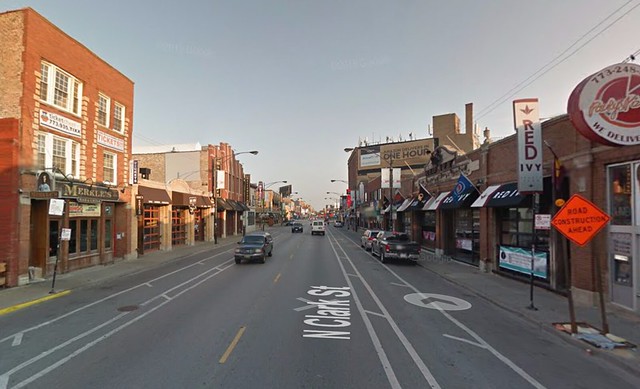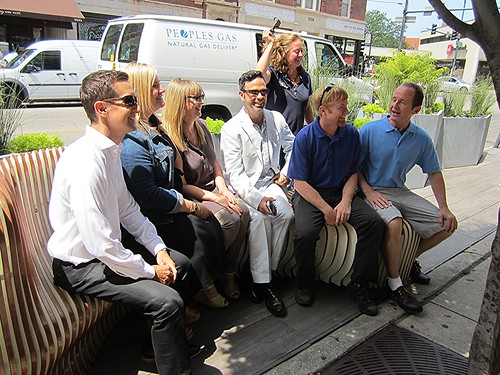
Yesterday, aldermen from two of the densest parts of town convinced the City Council License Committee to let them ban food carts from congested streets in their wards. Downtown’s Brendan Reilly and Lakeview’s Tom Tunney argued that the pushcarts, which were recently legalized in Chicago, could be obstacles for pedestrians on narrow sidewalks that are already clogged with street furniture and sidewalk cafes.
It would be great to see Reilly and Tunney show a similar interest in widening sidewalks to help address this issue. Better yet, why not make some of these streets car-free some or all of the time to accommodate heavy foot traffic.
Pushcarts are a great way to bring vitality and food choices to a street, as well as create jobs and provide tax revenue to the city. However, Reilly wants to prohibit the vendors from working on Michigan Avenue from Oak Street to Roosevelt Road, as well as Wabash Avenue in the Loop, the Sun-Times reported. He would also ban them from portions of two dozen other streets in his ward, including many parts of the Gold Coast. He said the ordinance could possibly be relaxed in the future.
Similarly, Tunney plans to ban food carts from many of Lakeview’s retail strips, including the Wrigleyville and Boystown districts, as well as other parts of Halsted Street, Belmont Avenue, Broadway, Clark Street, and Diversey Avenue. “On Clark Street -- from Wrigley Field all the way down to Diversey -- the sidewalks are six to seven feet in width,” he told the Sun-Times. “It’s almost impossible to get down there pedestrian-wise.”
Tunney is correct that the sidewalks along Clark are absurdly narrow for the amount of pedestrian traffic they carry, especially during Cubs games and other special events. The same issue is common on many other Chicago business strips.
The city implemented a good temporary solution for this problem during the Twelve Bars of Christmas, a pub crawl that draws tens of thousands of people to Wrigleyville. They banned car parking along Clark during the event and set up barricades along the edge of the parking lane to double the amount of space for pedestrians.
Widening the Clark sidewalks permanently would require additional right-of-way, of course. Perhaps this could be achieved by narrowing the travel lanes. If not, the city should consider stripping parking from one side of the street to make more room.
Sure, this would eliminate a few dozen parking spaces in the neighborhood, which already has hundreds of new off-street parking spaces in the works. But it would make room for hundreds of additional people on the sidewalks, which would be a net win for merchants. Tunney has previously told me he feels it’s worth swapping parking spots for People Spot mini parks as a strategy for attracting shoppers to Lakeview, so perhaps he might be open to exploring the idea of trading parking on Clark for wider sidewalks.
If Reilly and Tunney are really serious about improving conditions for pedestrians, they should reconsider the proposal the Active Transportation Alliance’s made last year to fully or partially pedestrianize 20 Chicago streets. Their list included some of the very thoroughfares that the aldermen plan to ban food vendors from.
Streetsblog Reader Jacob Peters sent us a version of the Sun-Times article with a few words changed, as if Reilly and Tunney wanted to ban cars, rather than carts, from these streets as a strategy to make more room for walking. Here’s an excerpt:
Two aldermen representing the congested areas of downtown and Lakeview on Tuesday declared portions of their wards off-limits to Chicago’s 2,000,000+ cars.
Aldermen Brendan Reilly (42nd) and Tom Tunney (44th) persuaded the City Council License Committee to approve the opt-out ordinances for the same basic reasons: narrow streets already clogged with pedestrians and filled with street furniture, sidewalk cafes and bus stops and news boxes simply can’t handle anymore clutter.
“All of these things can require pedestrians to have to do a slalom course as they’re working their way through downtown Chicago,” Reilly said. “That’s the concern here. … There’s only so much sidewalk. … The very nature of cars is that they dominate any street they're allowed on.”




